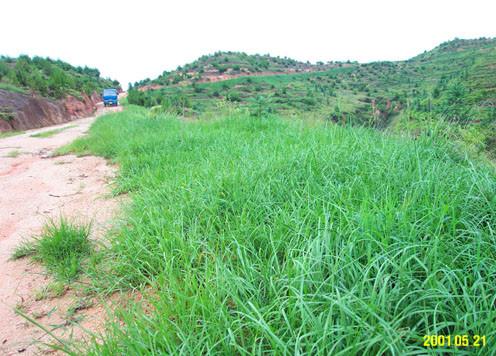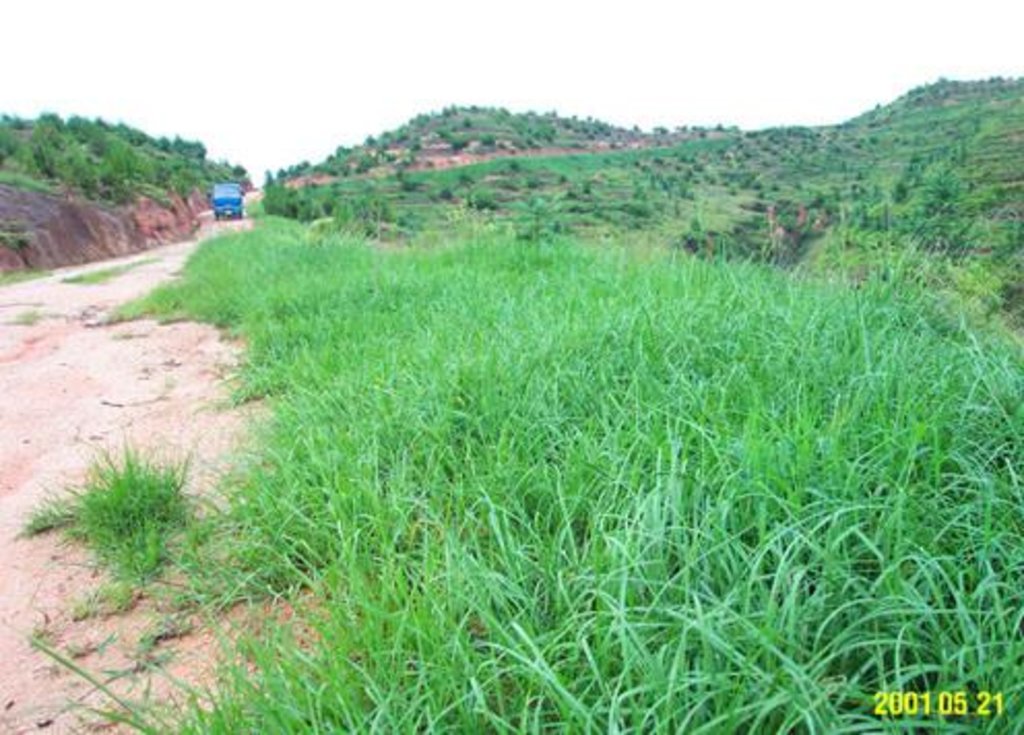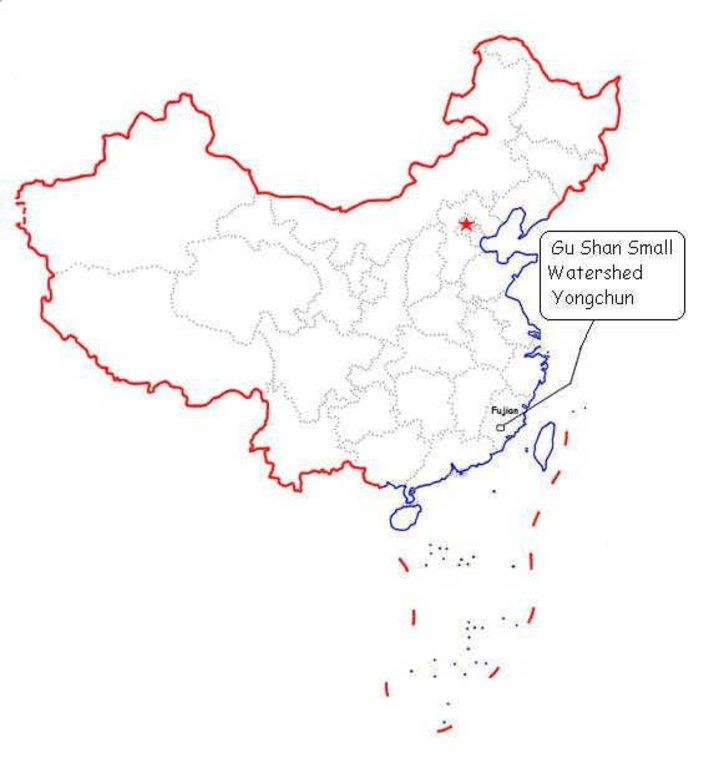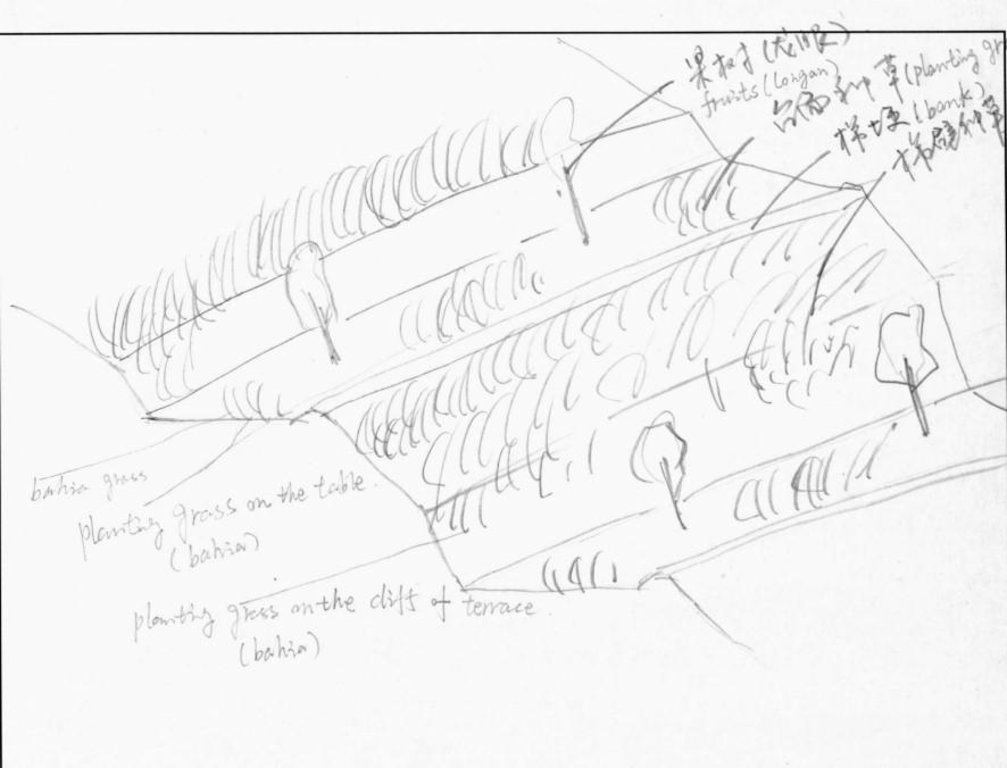Bahia grass (Paspalum notatum) interplanted in orchards [China]
- Creation:
- Update:
- Compiler: Unknown User
- Editor: –
- Reviewer: Laura Ebneter
approaches_2410 - China
View sections
Expand all Collapse all1. General information
1.2 Contact details of resource persons and institutions involved in the assessment and documentation of the Approach
Key resource person(s)
SLM specialist:
Chen Heling
86-595-3883382
Soil Conservation Office of Yongchun County
No. 99 liuan road, Yongchun county, Fujian province 362600
China
Name of the institution(s) which facilitated the documentation/ evaluation of the Approach (if relevant)
Soil Conservation Office of Yongchun (SCOY) - China1.3 Conditions regarding the use of data documented through WOCAT
The compiler and key resource person(s) accept the conditions regarding the use of data documented through WOCAT:
Yes
2. Description of the SLM Approach
2.1 Short description of the Approach
Comprehensive control measures including the bahia grass interplantation in the orchards.
2.2 Detailed description of the Approach
Detailed description of the Approach:
Bahia grass interplanted in the orchards aims to improve the ground cover and prevent the water erosion; The project had been implemented between 1991 and 2000. Through the demonstration site, helping the farmers to plant bahia grass in the orchards. The governments at county and township levels and the soil conservation departments are the organizers, the farmers are the main community to implement the project.
2.3 Photos of the Approach
2.5 Country/ region/ locations where the Approach has been applied
Country:
China
Region/ State/ Province:
Fujian Province
Map
×2.6 Dates of initiation and termination of the Approach
Indicate year of initiation:
1991
Year of termination (if Approach is no longer applied):
2002
2.7 Type of Approach
- project/ programme based
2.8 Main aims/ objectives of the Approach
Interplanted bahia grass in the orchards so as to increase the ground cover percentage, prevent runoff occur or erosion, increase the soil organic matters and improve the orchards benefits; Changing the traditional cultivation customs, guide the farmers to manage the orchards scientifically so as to prevent the soil erosion, improve the growing conditions of fruit trees.
The SLM Approach addressed the following problems: At the beginning of the program, farmers did not fully realize the measure of bahia grass interplantation in orchards, because the measure did not accord with traditional method so that it was very hard for farmers to accept; The germinant percentage of the bahia grass was comparatively low; Lack of funds.
2.9 Conditions enabling or hindering implementation of the Technology/ Technologies applied under the Approach
social/ cultural/ religious norms and values
- hindering
the new measure was not accord with the traditional method
Treatment through the SLM Approach: set up the demonstration site, and more publication to farmers
availability/ access to financial resources and services
- hindering
implementation of project needs lots of funds
Treatment through the SLM Approach: increase the fund input through various channels
legal framework (land tenure, land and water use rights)
- enabling
The existing land ownership, land use rights / water rights moderately helped the approach implementation: Most farmers are willing to develop in their own lands.
knowledge about SLM, access to technical support
- hindering
it is difficult for farmers to learn the technologies of bahia grass and Ma bamboo plantation
Treatment through the SLM Approach: more technical training
3. Participation and roles of stakeholders involved
3.1 Stakeholders involved in the Approach and their roles
- local land users/ local communities
Working land users were mainly men (Men are the main labors.)
- local government
County soil conservation office, Gushan Township government
- national government (planners, decision-makers)
3.2 Involvement of local land users/ local communities in the different phases of the Approach
| Involvement of local land users/ local communities | Specify who was involved and describe activities | |
|---|---|---|
| initiation/ motivation | self-mobilization | Mainly:public meetings; partly: workshops/seminars; convening the mobilization meeting, and special workshop |
| planning | interactive | Mainly: rapid/participatory rural appraisal; partly: public meetings |
| implementation | external support | responsibility for minor steps |
| monitoring/ evaluation | interactive | measurements/observations; |
| Research | interactive | on-station |
3.4 Decision-making on the selection of SLM Technology/ Technologies
Specify who decided on the selection of the Technology/ Technologies to be implemented:
- mainly SLM specialists, following consultation with land users
Explain:
Decisions on the method of implementing the SLM Technology were made by by politicians / leaders: directive (top-down), county government made the decision
4. Technical support, capacity building, and knowledge management
4.1 Capacity building/ training
Was training provided to land users/ other stakeholders?
Yes
Specify who was trained:
- land users
- SWC specialists, planners (2)
Form of training:
- farmer-to-farmer
- demonstration areas
- courses
Subjects covered:
bahia grass plantation technique and citrus cooperation between Fujian & Taiwan Provinces.
4.2 Advisory service
Do land users have access to an advisory service?
Yes
Describe/ comments:
Name of method used for advisory service: Meeting, technical training & materials; Key elements: Technique training, demonstration; 1) Mainly: projects own extension structure and agents, Partly: government's existing extension system 2) Mainly: projects own extension structure and agents, Partly: government's existing extension system; Extension staff: mainly government employees 3) Target groups for extension: technicians/SWC specialists; Activities: training
Advisory service is quite adequate to ensure the continuation of land conservation activities; governmental propaganda, soil conservation extension, application of soil conservation measures, improving the benefit and encourage the farmers to voluntary participate in the project.
4.3 Institution strengthening (organizational development)
Have institutions been established or strengthened through the Approach?
- yes, moderately
Specify the level(s) at which institutions have been strengthened or established:
- local
Specify type of support:
- financial
- capacity building/ training
- policy
4.4 Monitoring and evaluation
Is monitoring and evaluation part of the Approach?
Yes
Comments:
bio-physical aspects were ad hoc monitored through observations
technical aspects were regular monitored through measurements
socio-cultural aspects were ad hoc monitored through observations
economic / production aspects were monitored through measurements
area treated aspects were monitored through measurements
land users involved aspects were monitored through observations
There were no changes in the Approach as a result of monitoring and evaluation
4.5 Research
Was research part of the Approach?
Yes
Specify topics:
- ecology
Give further details and indicate who did the research:
Bahia grass interplantion project is the research project of the county soil conservation experimental station.
Research was carried out both on station and on-farm
5. Financing and external material support
5.1 Annual budget for the SLM component of the Approach
If precise annual budget is not known, indicate range:
- > 1,000,000
Comments (e.g. main sources of funding/ major donors):
Approach costs were met by the following donors: government (National - counterpart funds): 12.0%; local community / land user(s) (agriculture comprehensive develop. Fund): 17.0%; other (local farmer input(labor)): 71.0%
5.2 Financial/ material support provided to land users
Did land users receive financial/ material support for implementing the Technology/ Technologies?
Yes
5.3 Subsidies for specific inputs (including labour)
- equipment
| Specify which inputs were subsidised | To which extent | Specify subsidies |
|---|---|---|
| tools | partly financed | hand tools |
- agricultural
| Specify which inputs were subsidised | To which extent | Specify subsidies |
|---|---|---|
| seeds | fully financed | provided by the county soil conservation office |
| seedlings | partly financed | |
- infrastructure
| Specify which inputs were subsidised | To which extent | Specify subsidies |
|---|---|---|
| community infrastructure | partly financed | |
If labour by land users was a substantial input, was it:
- paid in cash
Comments:
subsidy according to the development areas, labour rewarded with other materials as well
5.4 Credit
Was credit provided under the Approach for SLM activities?
Yes
Specify conditions (interest rate, payback, etc.):
Interest rate charged: 0.5%; repayment conditions: repay year by year after the fruit trees yield.
Interest was lower than market rate.
6. Impact analysis and concluding statements
6.1 Impacts of the Approach
Did the Approach help land users to implement and maintain SLM Technologies?
- No
- Yes, little
- Yes, moderately
- Yes, greatly
Increased the ground cover and soil organic matters.
Did the Approach improve issues of land tenure/ user rights that hindered implementation of SLM Technologies?
- No
- Yes, little
- Yes, moderately
- Yes, greatly
With the favorable policies and financial support, local farmers can generally accept it. The problem is likely to be overcome in the near future. With the establish and development of the rural market economy, SWC activities are popular in investment not only by farmers themselves but also by city residents who have funds and would like to invest in SWC. This trend could reduce the conflict between land ownership and land user right.
Did other land users / projects adopt the Approach?
- No
- Yes, little
- Yes, moderately
- Yes, greatly
80 ha bahia grass have been interplanted in the citrus farm.
6.3 Sustainability of Approach activities
Can the land users sustain what has been implemented through the Approach (without external support)?
- yes
6.4 Strengths/ advantages of the Approach
| Strengths/ advantages/ opportunities in the land user’s view |
|---|
| Bahia grass interplantation in the orchards (especially in the young orchards) is the most effective method for the soil conservation. (How to sustain/ enhance this strength: strengthening the training and extension in order to improve the farmers' SWC knowledge.) |
| Strengths/ advantages/ opportunities in the compiler’s or other key resource person’s view |
|---|
| Bahia grass interplantation in the orchards (especially in the young orchards) is the most effective method for the soil conservation. (How to sustain/ enhance this strength: strengthening the scientific guidance so as to improve the farmers' knowledge.) |
| Mountain and hilly areas closure is an ideal measure with less input and fast effect. (How to sustain/ enhance this strength: Enhancing management.) |
6.5 Weaknesses/ disadvantages of the Approach and ways of overcoming them
| Weaknesses/ disadvantages/ risks in the compiler’s or other key resource person’s view | How can they be overcome? |
|---|---|
| Low percentage of seeds germination for bahia grass. | Strengthening the experimental study to solve the problem. |
7. References and links
7.1 Methods/ sources of information
- field visits, field surveys
- interviews with land users
7.2 References to available publications
Title, author, year, ISBN:
Acceptance Materials for the Shan Huxi Small Watershed Cosntruction Project.
Available from where? Costs?
Soil & Water Conservation Office of Yongchun County
Links and modules
Expand all Collapse allLinks
No links
Modules
No modules






